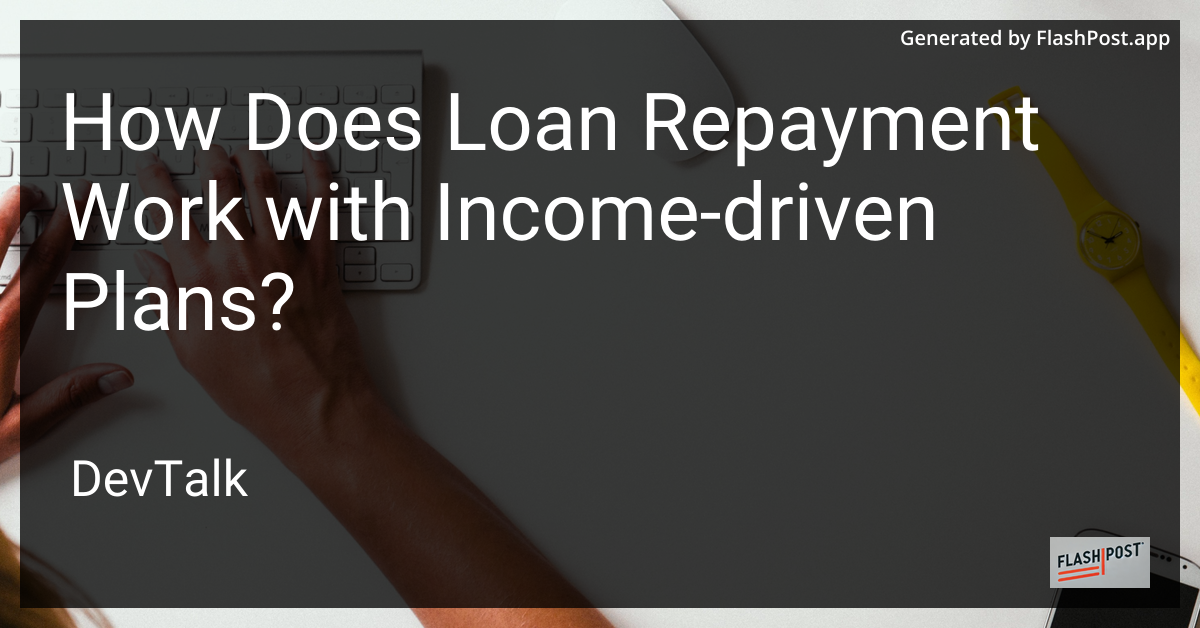How Does Loan Repayment Work with Income-driven Plans?
 # How Does Loan Repayment Work with Income-Driven Plans?
# How Does Loan Repayment Work with Income-Driven Plans?
When it comes to managing loan repayment, particularly for federal student loans, income-driven repayment (IDR) plans offer a flexible and manageable approach.
These plans are designed to keep payments affordable based on your income and family size, ensuring you can stay on top of your loan obligations without financial strain.
What Are Income-Driven Repayment Plans?
IDR plans adjust your monthly loan payments according to your discretionary income. These plans include:
- Income-Based Repayment (IBR)
- Pay As You Earn (PAYE)
- Revised Pay As You Earn (REPAYE)
- Income-Contingent Repayment (ICR)
Each plan calculates payments differently, but they all aim to cap monthly payments at a percentage of your income. Generally, this percentage ranges from 10% to 20%.
Key Features of Income-Driven Plans
- Affordable Payments: Payments are determined by your income and family size, not loan balance.
- Loan Forgiveness: After 20-25 years of consistent repayment under an IDR plan, any remaining loan balance may be forgiven.
- Annual Certification: Borrowers must recertify their income and family size each year to adjust payments accordingly.
- Interest Accumulation: If your monthly payments are lower than the interest charged, the remaining interest might be capitalized, increasing your loan balance.
How to Apply for an Income-Driven Plan
To apply for an IDR plan:
- Assess Eligibility: Determine which plans you qualify for based on your loan type and income.
- Submit an Application: Complete the Income-Driven Repayment Plan Request form on the Federal Student Aid website or through your loan servicer.
- Provide Documentation: Submit proof of income, such as pay stubs or a tax return.
- Recertify Annually: Update your income information each year to keep your plan active.
Advantages and Disadvantages of IDR Plans
Advantages
- Reduced Financial Pressure: Payments are made affordable based on income, reducing stress.
- Access to Loan Forgiveness: Potential for loan forgiveness after a set period.
- Protection During Hardships: Low or $0 payments during periods of low income.
Disadvantages
- Interest Capitalization: Unpaid interest may increase the overall loan balance.
- Tax Implications: Forgiven debt might be considered taxable income.
- Extended Repayment Period: Longer repayment terms could lead to higher total payment amounts.
Comparisons to Other Loan Repayment Scenarios
While income-driven plans focus on federal student loans, managing other types of loans, like payday or personal loans, also require strategic repayment approaches. Understanding how payday loan repayment works is crucial, as these loans often have shorter terms and higher interest rates. Furthermore, how payday loans affect your credit should be considered when opting for these types of loans.
For personal loans, adopting practices of responsible loan repayment can prevent financial stress, while strategies for student loan repayment can help manage educational debts effectively.
Conclusion
Income-driven repayment plans provide a lifeline for borrowers struggling to manage their federal student loans. By aligning payments with income, these plans offer a sustainable solution to debt management. For those dealing with other types of loans, understanding different repayment dynamics and their financial implications is essential to maintaining a healthy credit profile and ensuring financial well-being.
For those interested in learning more about various loan repayment strategies, exploring options across different loan types can offer valuable insights into maintaining financial stability.
Explore more about payday loan repayment and how to maintain a balanced financial approach.